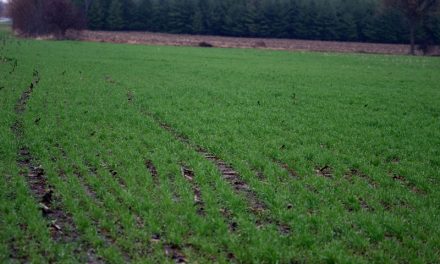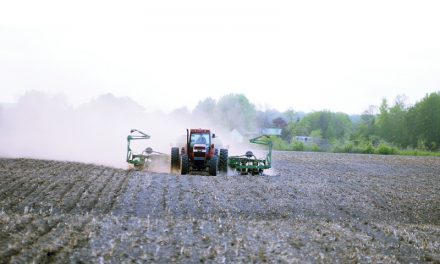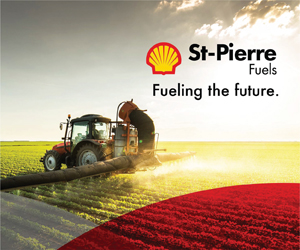By Tom Manley
AgriNews Contributor
Farmers are increasingly faced with various pressures that can be addressed with a seeding plan. As the seeding season is upon us, farmers have decisions to make, not just about the immediate crop to plant, but also the cover crops that will enhance long-term profitability and environmental sustainability.
For one, the rising costs of synthetic fertilizers, especially nitrogen, forces a consideration of an alternative source of nitrogen. The cost of energy is also a factor when considering the horsepower required to till the field. Environmental pressures from the public and the government are driving farmers to consider carbon sequestration, organic matter in the soil, soil erosion, and water retention. Climate change presents farmers with the obligation to consider adaptation and mitigation strategies. All these issues can be addressed with a wide range of management strategies. OMAFRA and agronomists, whether active in conventional or organic agriculture, will always recommend the use of cover crops as a key sustainability strategy.
The high commodity values give farmers a unique opportunity to use those extra revenues to shift their management to long-term soil development and farm sustainability. Properly designed cover crops have negligible short-term impact on yields, so the gross revenue will remain stable. However, cover crops represent extra input costs. With historically thin crop margins, farmers avoided input costs that did not produce immediate results and thus sacrificed the long-term positive benefits.
A key benefit of legume cover crops in a long crop rotation is to avoid the purchase of expensive nitrogen fertilizers. The ecological farmer will typically broadcast a legume such as red clover into a standing cereal crop after the last weed control procedure, be it mechanical or chemical. The cereal will initially shade the clover and delay its development.
After the cereal harvest in August, the legume has two months to develop into a luscious crop of nitrogen that is incorporated, perhaps with an application of manure. The following corn crop will do fine with minimal or no addition of synthetic nitrogen fertilizer.
The second benefit of cover crops is to increase organic matter in the soil. The farmer will benefit from improved soil tilth, easier water drainage, and increased water retention to mitigate the impact of climate change and the irregular patterns of precipitation. Many testimonials confirm that ecologically produced crops in soil with high levels of organic matter fair much better in weather extremes.
Good soil structure is achieved with crop residues, especially derived from cover crops. Aggregates of soil and organic matter reduce erosion and soil loss, which is relevant in weather extremes. Organic matter is a key ingredient to reduce compaction and improve the carrying capacity of the soil. Furthermore, good soil structure makes tillage easier and reduces the horse power and energy costs for tillage tasks. Oilseed radish is an excellent cover crop to break compaction and retain nitrogen at the same time.
Organic matter also retains more nutrients and reduces the impact of nutrient leaching into the drainage network. This is particularly useless to retain expensive nitrogen, from either manure or synthetic sources. The biological activity in the soil binds nitrogen and carbon. Without sufficient carbon, the nitrogen remains volatile.
Pest and weed suppression are key benefits of cover crops. Nature hates a void on the soil surface. The seed bank is large enough in the soil so that nature will germinate something to take up the space. Cover crops provide a ready competitor and will choke out weeds to the benefit of the economic crops.
Cover crops, planted as a companion crop, will contain the spread of surface diseases by providing a green barrier, preventing the splashing or fungal spores, and create a habitat for predators. Even when the cover crop is converted to organic matter, it serves as a disease suppressor. An active soil microbial environment, fed by cover crops, competes effectively with soil-borne diseases.
While the farm’s financial statements can readily record the cost of cover crops, the short- and long-term benefits are not immediately obvious. The scientific farm would either rely on the vast amount of scientific information that supports cover crops or conduct the farm’s own field trials with the long-term comparison of rotations with and without cover crops.
Cover crops are not just a vague investment based on faith. The ecological farmer will quickly see how cover crops offset input costs and improve yields. They can also generate their own income. By reducing or even avoiding synthetic inputs, the ecological farmer will move to organic certification.
As a successful management tool, cover crops will both reduce input costs and double the market value of certified organic field crops. Several organic farmers will tell you that they would stay organic even if organic crop values were the same as conventional crop values. Cover crops are their solution to reduce input costs while maintaining strong yields and farm profitability.












